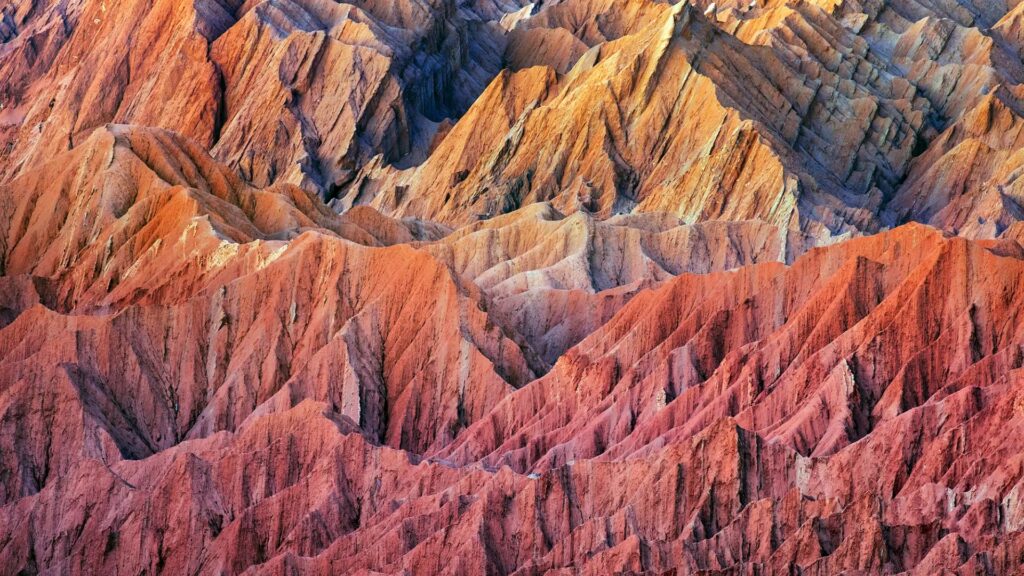
The Atacama Desert in northern Chile is renowned as the driest nonpolar desert on Earth. Spanning approximately 1,000 kilometers along the Pacific coast, it presents a landscape so arid that some weather stations within the desert have never recorded rainfall.
This extreme dryness results from a combination of geographical and climatic factors that create a unique environment, challenging life yet fostering remarkable adaptations.
Geographical Barriers
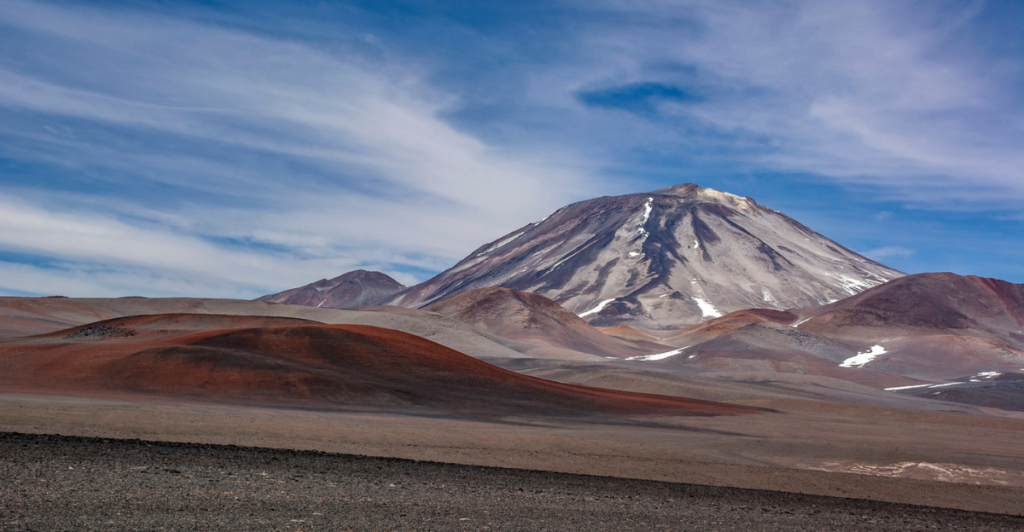
The Atacama’s location between the Andes Mountains to the east and the Chilean Coast Range to the west plays a pivotal role in its aridity. The towering Andes act as a formidable barrier, preventing moist air from the Amazon Basin from reaching the desert. As moist air ascends the eastern slopes of the Andes, it cools and precipitates, leaving little moisture to traverse the peaks and descend into the Atacama.
The Humboldt Current
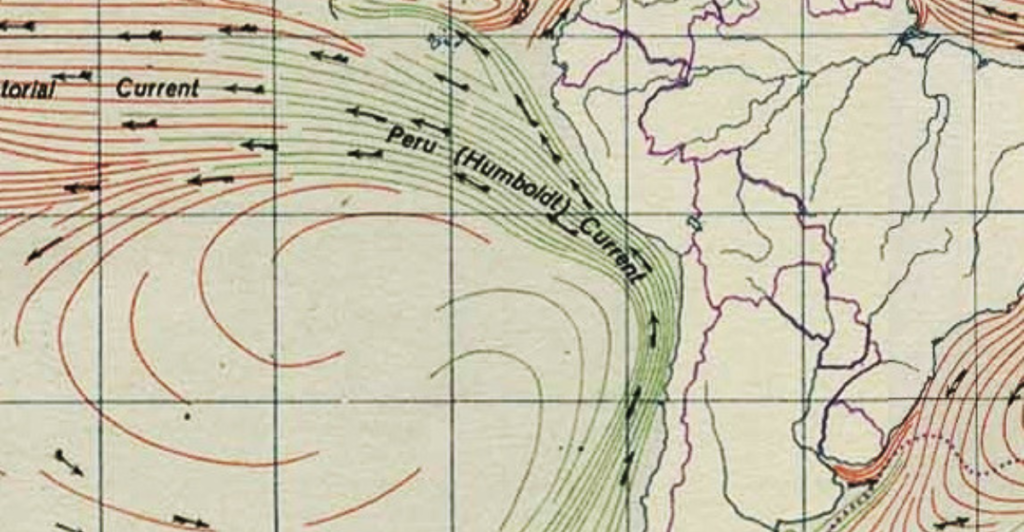
Along the western edge of the Atacama, the cold Humboldt Current flows northward along the Chilean coast. This current cools the marine air, reducing its capacity to hold moisture. As this cool, dry air moves inland, it further suppresses cloud formation and precipitation over the desert.
Atmospheric Stability
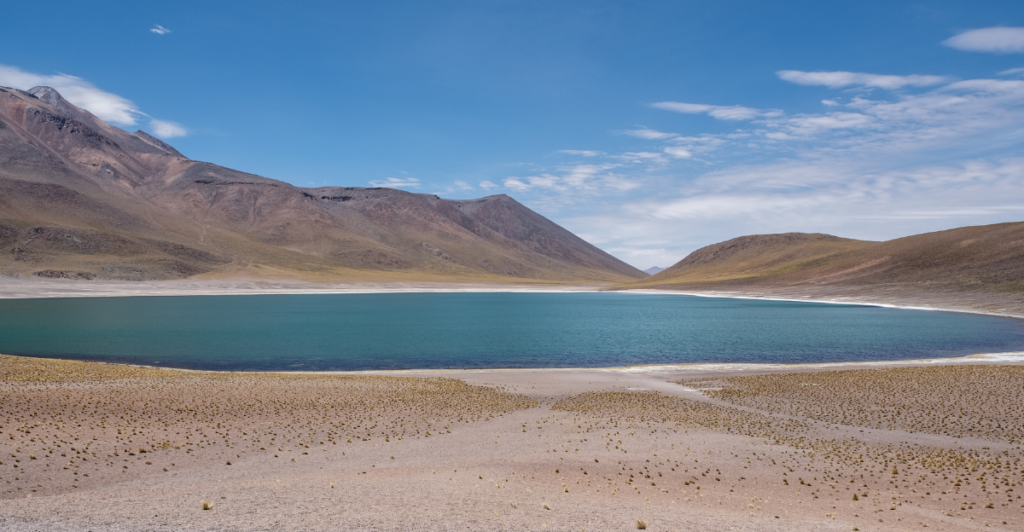
High-pressure systems prevalent over the southeastern Pacific Ocean contribute to the Atacama’s dryness. These systems promote atmospheric stability, inhibiting the vertical movement of air necessary for cloud development and rainfall. The resulting clear skies and persistent sunshine enhance evaporation rates, intensifying the desert’s arid conditions.
Rain Shadow Effect
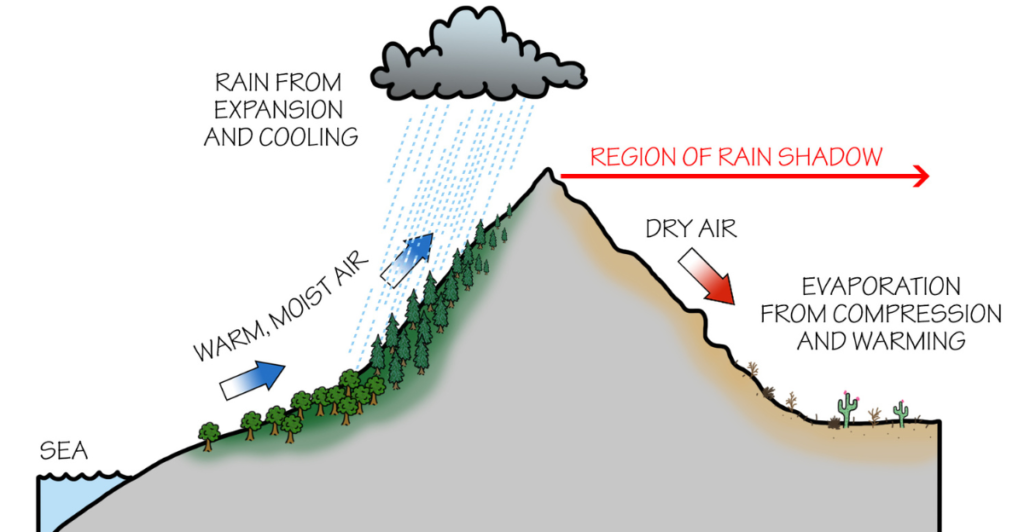
The combined influence of the Andes Mountains and the coastal ranges creates a pronounced rain shadow effect. As moist air masses are forced to rise over these mountain barriers, they lose moisture through precipitation. By the time the air descends into the Atacama, it is exceedingly dry, leading to hyper-arid conditions.
Lack of Precipitation
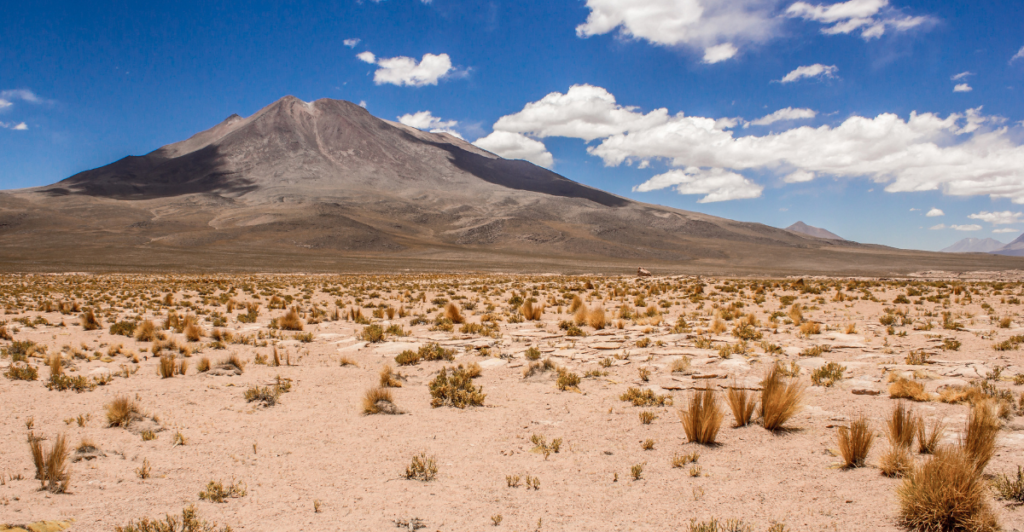
The Atacama Desert receives an average annual rainfall of less than 15 millimeters, with some regions experiencing periods of up to four years without any measurable precipitation. Certain weather stations have never recorded rainfall, underscoring the desert’s extreme aridity.
Fog as a Moisture Source
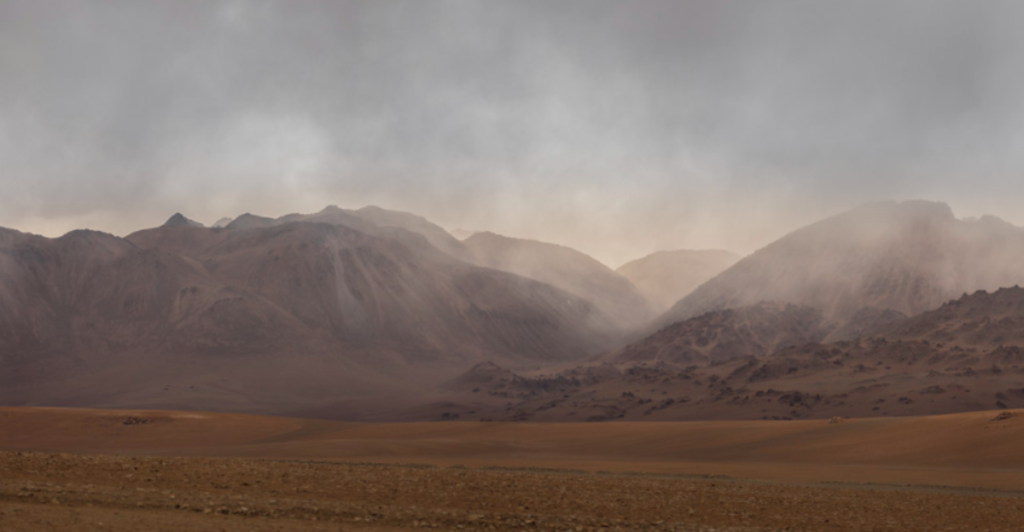
Despite minimal rainfall, the Atacama experiences coastal fog known as “camanchaca.” This fog provides a crucial moisture source for specialized flora and fauna adapted to the desert environment. Recent studies have highlighted the role of camanchaca in the water supply for cacti species, enabling their survival in such an arid climate.
Floral Adaptations

The sparse vegetation in the Atacama has evolved remarkable adaptations to capture and utilize limited moisture. Cacti and other succulents possess specialized structures to absorb water from fog and store it efficiently. These evolutionary traits allow plant life to persist despite the harsh, dry conditions.
Rare Rainfall Events
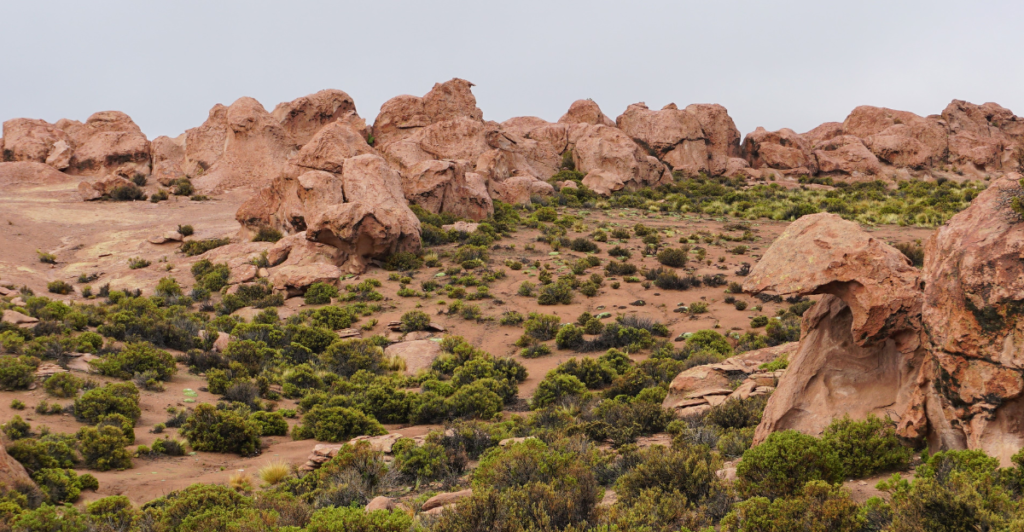
Occasionally, the Atacama experiences rare rainfall events, often associated with climatic phenomena like El Niño. These infrequent rains can lead to sudden, brief blooms of wildflowers, transforming the desert landscape into a vibrant tapestry of colors. Such events, though uncommon, demonstrate the desert ecosystem’s resilience and capacity for rapid response to moisture availability.
Human Adaptation
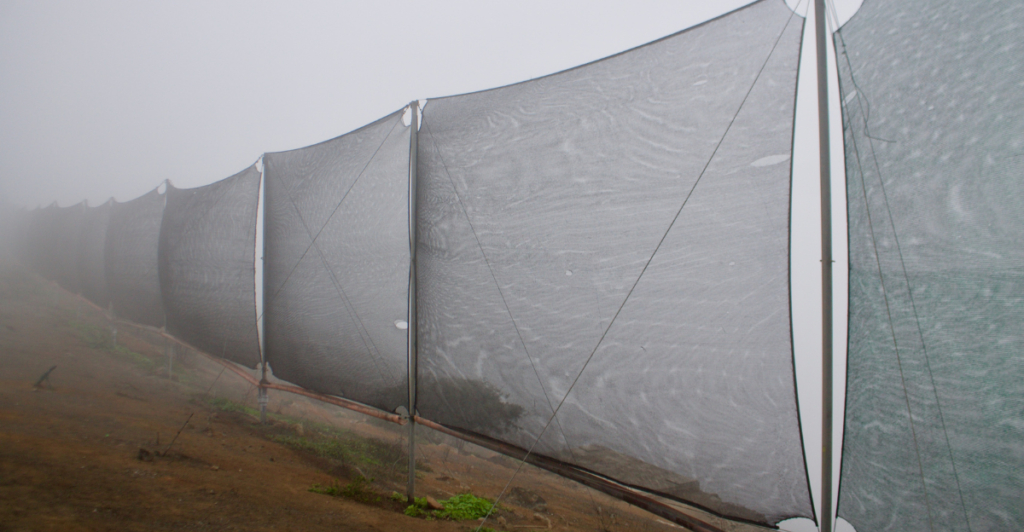
Human settlements in the Atacama have historically adapted to the extreme dryness by developing innovative water management strategies. Ancient indigenous communities utilized fog nets to harvest moisture from camanchaca, a practice that continues in some areas today. Modern technologies have further enhanced water collection and conservation, supporting both local populations and mining operations.
A Possibility
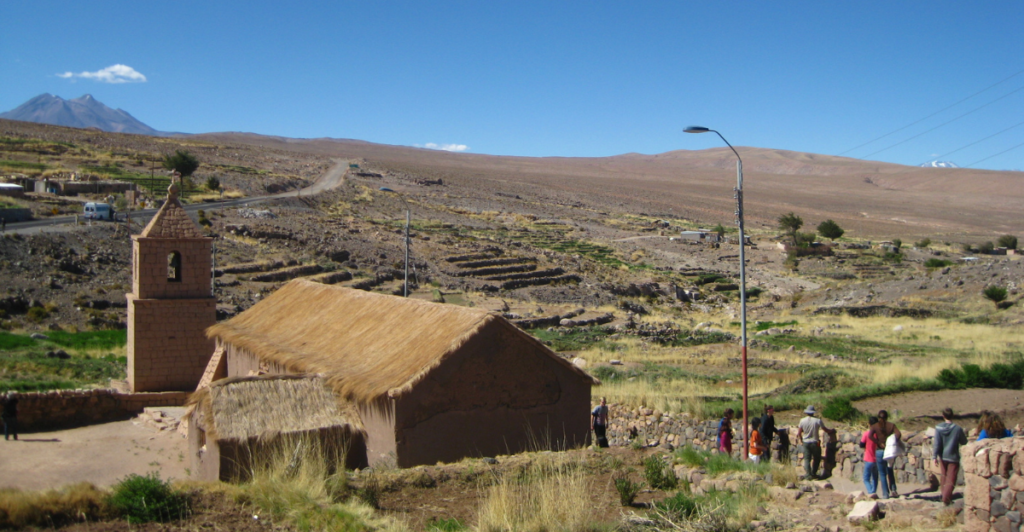
Despite its harsh conditions, the Atacama Desert has been inhabited for thousands of years. Indigenous communities, such as the Atacameños, have developed unique adaptations to survive in this environment, utilizing scarce water resources and cultivating crops suited to arid conditions. In modern times, the desert’s mineral wealth, including copper and lithium, has attracted mining activities, leading to both economic opportunities and environmental challenges.
Scientific Research

The Atacama’s hyper-arid conditions have attracted scientific interest, particularly in astrobiology. Its Mars-like environment serves as an analog for studying potential life on other planets. Researchers conduct experiments in the desert to test instruments and theories related to the search for extraterrestrial life, capitalizing on the Atacama’s extreme dryness and soil composition.
The Driest Desert
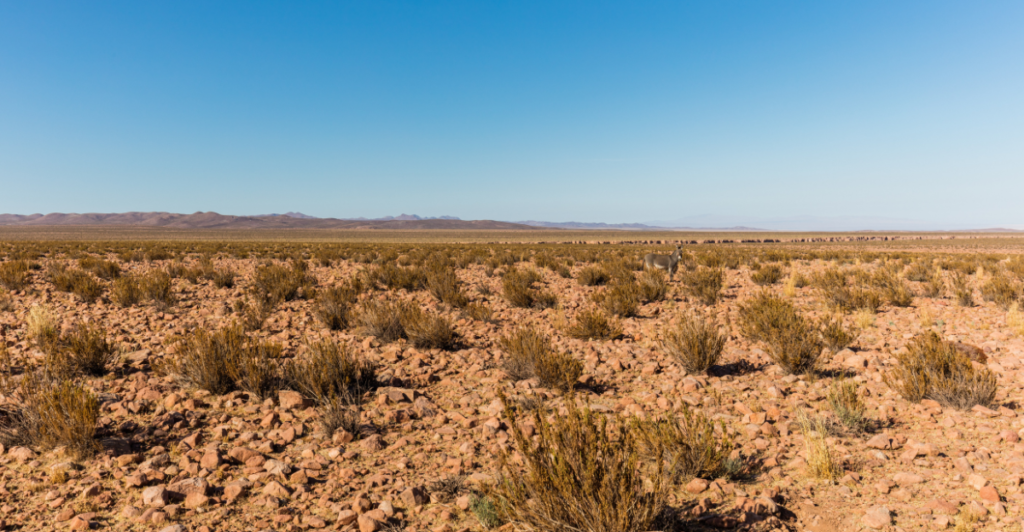
The Atacama Desert’s status as the driest place on Earth results from a complex interplay of geographical features and climatic factors. The Andes Mountains, the Humboldt Current, atmospheric stability, and the rain shadow effect collectively inhibit precipitation, creating an environment of extreme aridity.
Despite these harsh conditions, life has adapted in extraordinary ways, utilizing scarce moisture sources like fog to survive. The Atacama stands as a testament to nature’s resilience and the intricate balance of factors that define Earth’s diverse climates.
Discover more of our trending stories and follow us to keep them appearing in your feed.

Meet the Massive Crocodiles That Make Their Homes 40 Feet Underground
The Rarest Fish on Earth is Thriving in Nevada’s Desert
12 Ancient Desert Plants That Once Fed America’s Earliest Inhabitants
Scientists Uncover Secret Life Beneath Earth’s Harshest Desert
Stay connected with us for more stories like this! Follow us to get the latest updates or hit the Follow button at the top of this article, and let us know what you think by leaving your feedback below. We’d love to hear from you!







